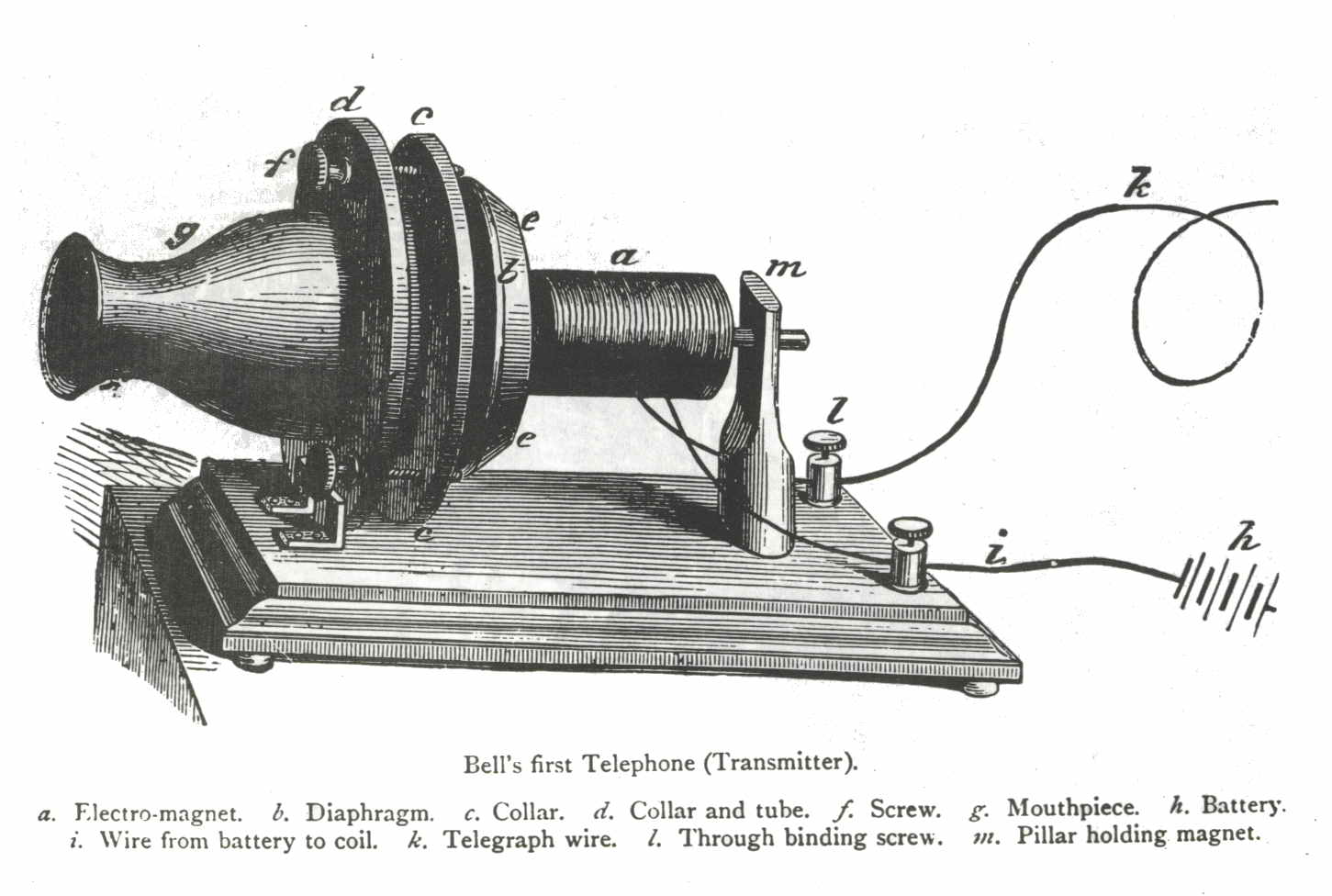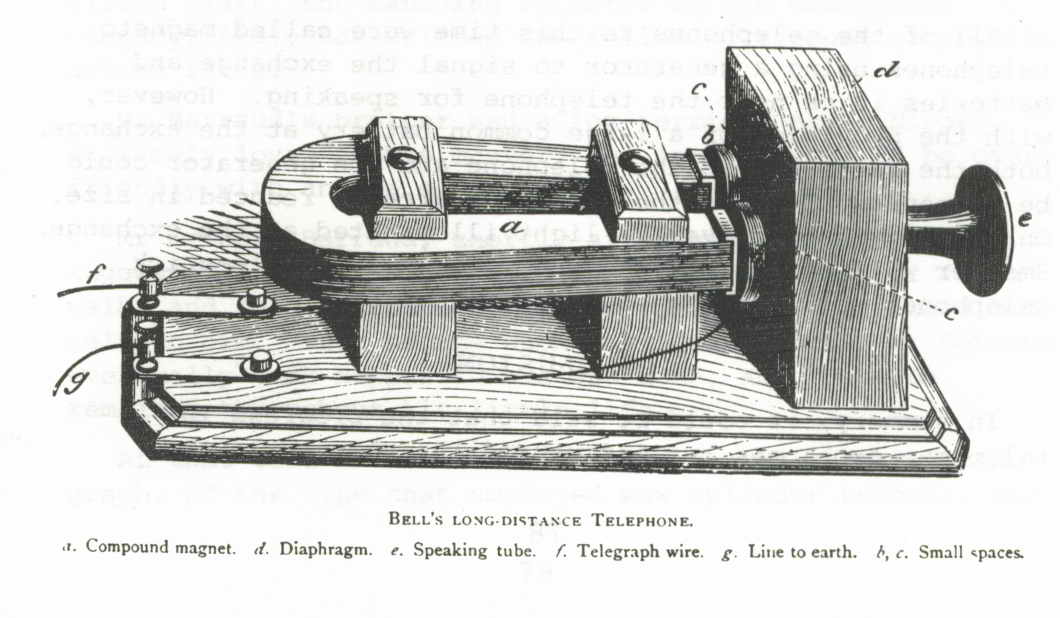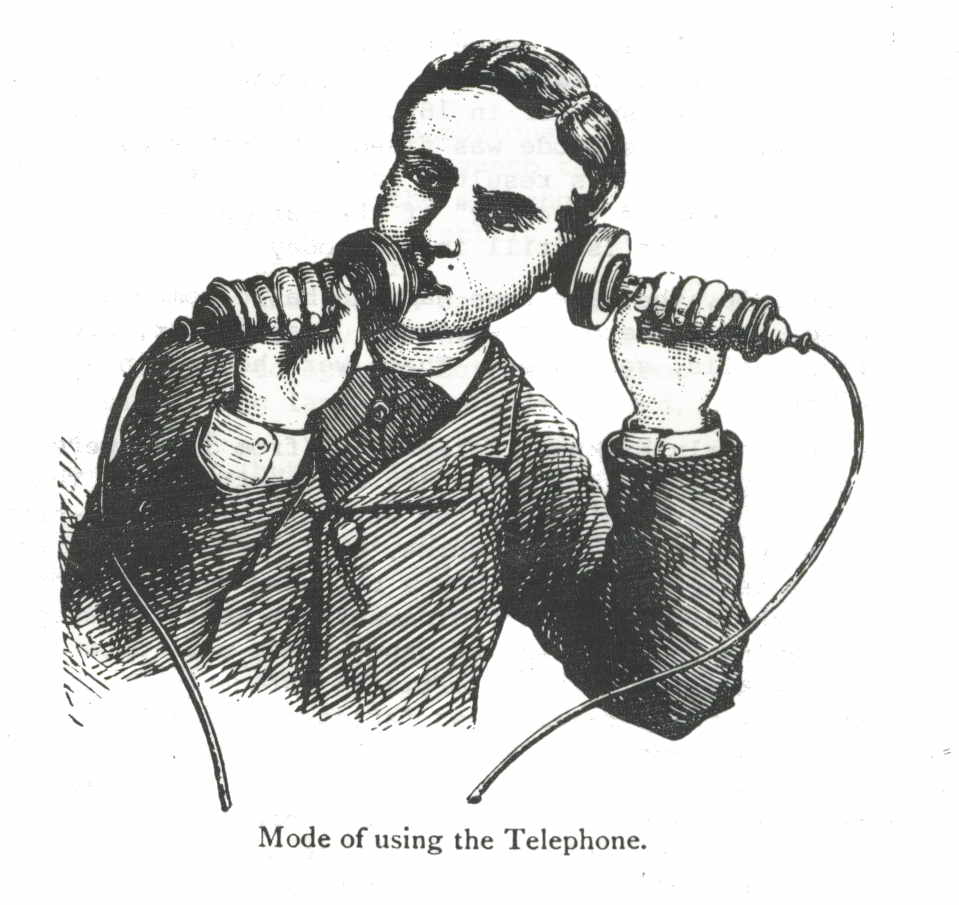THE
HISTORY OF THE TELEPHONE
(from “The Phonographic News”. 1975)
INTRODUCTION
The electric telegraph was invented by Samuel Morse in 1836 and first put into practical use in 1844. The system was introduced in the Colony of South Australia in 1856. Charles Todd was appointed Superintendent of Telegraphs in 1855, and under his supervision the telegraph system expanded, providing the Colony with virtually instantaneous communication.
1844 was the beginning of the Electric Communication Age!
The next major step forward in the electric communication era was the invention of the first practical telephone by Alexander Graham Bell in 1876. About this time there were many types of telephone inventions published. Various articles on new types of telephones were printed in the Scientific American Journal; however, Bell's telephone was not only the most practical, it was also the most effective. Only a year later Charles Todd was engaged in telephone experiments in South Australia. At this stage an extract from his Report of 1884 sets the perspective in regard to the local situation:
TELEPHONES
"It is not necessary to enter here upon a history of the invention of the telephone, or to describe the scientific principles of its construction and working; it will suffice to say that in 1877, or late in the preceding year it first became practicable to talk by electricity, and convey speech to a distance so clearly that even the speaker's voice could be recognised. The telephone, like the telegraph, supplied a want which the utilitarian spirit of the age at once recognised. Like the telegraph, too, great effects are produced by means the most simple. In the one a few strips of zinc and copper supply the force which flashes our thoughts over hundreds and thousands of miles in time inappreciable; in the other, a short coil of wire, a small magnet, and a thin disc of iron vibrate our voice to distant friends. That results so marvellous should be possible with such simple appliances constitutes one of the greatest triumphs of modern science.

The instrument soon passed out of its initiatory and experimental stage, and on the subsequent discovery of the microphone, began to be availed of for commercial and domestic purposes. Private wires were run up in all directions, and what are known as telephone exchanges were established, the United States taking the lead of all other nations.
"We tried it here at an early date, before the discovery of the microphone, and with telephones (of the Graham Bell type) made in our own workshop, effected communication, first, between the Semaphore, Adelaide and Kapunda, in January, 1878; and subsequently between the Semaphore and Port Augusta, a distance by wire of 240 miles. It was also tried most successfully on the Port Darwin line, between Beltana and Stragways Springs, a distance of 200 miles.
"Amongst many experimental trials of the telephones, it may be of interest to mention that we had several concerts, in which the singers and accompanying instrumentalists were eighty or more miles apart. For instance, duets were sung, one person singing at Willunga with a pianoforte accompaniment, and the other at Kapunda, accompanied by a violin, the audience being in Adelaide.
"The first practical introduction of the system was to connect the police station with the Superintendent of the Fire Brigade and the valvehouse, on the 3rd of September, 1880 - subsequently extended so as to include all the fire-reel stations in the city.
"The next line was from Government House, in Adelaide, to the Governor's summer residence at Marble Hill, a distance of thirteen and three-quarter miles, erected in 1881, and opened on January 11th, 1882."
EARLY EXPERIMENTS
The first electrical apparatus known as the telephone was that invented by Philip Reis, a German, in 1861. This instrument was intended for the transmission of musical sounds and it was discovered by accident that speech had some effect on the apparatus, but the principles involved were not adequately known.
In the mid-1870's several "interrupter-type" telephones were invented which worked on the telegraph principle of interrupting an electric current flow but more rapidly in sympathy with the sound vibrations. They were not really effective as a telephone, being only capable of transmitting odd sounds rather than speech.
It
was not until 1876 that Alexander Graham Bell, a Scotsman
living in the U.S.A., invented the first practical telephone.
This worked on the principle of a changing magnetic
field inducing a current into a coil of wire.
Telephone conversations were able to be made over quite large
distances.

The
instrum ent
was used for both speaking and listening,
but by having two in series and holding one to the mouth and the other to the
ear, a conversation could be made without changing the position of the
telephone.
ent
was used for both speaking and listening,
but by having two in series and holding one to the mouth and the other to the
ear, a conversation could be made without changing the position of the
telephone.
A significant step forward in the art of telephony occurred around 1880 with the invention of the carbon granule microphone. The inclusion of this device in the telephone marked a major advance in the development of efficient telephone services. It is economical and has the unique quality of being its own amplifier in converting sound into electrical waves, magnifying the energy about 200 times. The granular carbon microphone was derived as a result of many experiments using carbon discs or rods to vary the electrical resistance of the circuit. The use of granulated carbon proved more effective in practice than the relatively unstable system of discs or rods. The early carbon transmitter had two fixed electrodes and a diaphragm which moved, altering the contact pressure between the carbon granules producing a corresponding change in the flow of electric current between the two electrodes. The next step forward in transmitter design was the invention of the solid back transmitter in 1890. With this type of transmitter, one electrode was fixed, the other was attached to the diaphragm. This resulted in a more effective transmitter which reduced "packing" of the carbon granules. This form of transmitter is still in use today.
So, by 1880, the telephone had the basic components typical of the magneto system, viz: transmitter, receiver, batteries, bells, generator. These were housed in a variety of cabinets.
The very early Eriksson (sic) telephones (from 1882) were quite large as they had to house two dry cell batteries. They were rather ornate as telephones were virtually handcrafted and compared with today's figures, not a great number were made. The telephone was either a business necessity or a luxury in the 1880's. Being ornaments as well as telephones, and displaying the Swedish influence, they were decorated in a manner in keeping with the artistic influence of that country. The table telephones, introduced in 1892, likewise were ornate instruments. The magnets for the generator (or magnets) formed the frame of the telephone. These were decorated with fine artwork. The artwork on the telephones was gradually dispensed with to provide a cheaper and more functional instrument (which tended to look the part).
All of the telephones to this time were called magneto telephones using a generator to signal the exchange and batteries in or near the telephone for speaking. However, with the provision of a large common battery at the exchange, both the batteries in the telephone and the generator could be dispensed with and the telephone greatly reduced in size. On lifting the receiver, a light illuminated at the exchange. Smaller wall telephones and the well-known candlestick telephones were introduced in consequence.
CONCLUSION
In summary, it could be said that the progress in telephone exchanges has influenced the changes in the function and appearance of telephones.
The exterior changes are obvious:
(i) First there was the magneto telephone with a generator (magnets) to signal the exchange, and a local battery of 2 dry cells to provide electric current to operate the carbon granule transmitter.
(ii) Next was the Common Battery (C.B.) Telephone, where a large 50 Volt battery at the telephone exchange provided electric current to operate both the carbon transmitter, and the signalling lamp at the switchboard, by simply lifting the handset.
(iii) Lastly (but not least by any means), and the type mainly in use today, the automatic telephone with a dial to operate the automatic switching equipment in the telephone exchange. (Transcript of April 4 programme by Mr. T. Thomas, Historical Officer, P.M.G's Department.)
An
extract from “The Phonographic News”. The Official Journal of The
Phonographic Society of South Australia.
Editor: G.C Scroop.